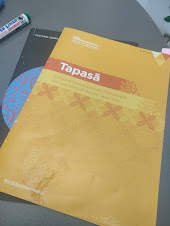TAPASA
I think quite often we get a bit scared to dive into these documents that we have sitting in our schools. It's often pushed to the side as other things have importance but seriously, this document needs to be used and time is given to unpack it. In the current times, it may not seem like a priority, but if you have Pasifika learners and families and are struggling to engage with them - pick up this document and get cracking.
Each time I spend time on this I learn something new, have another 'AH HA' moment.
A year ago I attended a Tapasa Workshop through Senior Teacher. Together with a colleague we unpacked each turu and identified what we've done in our school that fell into that compentency.
If you're not sure where to start - this is a good place to. Take each turu, one by one and unpack. Identify what you do in your school that is evidence of this. The great thing with this document is that it identifies what it looks like at different phases of your teaching career - a BT, classroom teacher, an experienced teacher and a leader.
As seen on the image below, I've unpacked the turu (in blue) and identified what we do in our school (in red) that shows evidence of this. I still feel that as a school we can be doing more to meet the needs of our Pasifika families so I've identified next steps (in green) for me to prioritise and bring to life.




I read your recent blog post featuring the Tapasā, with keen interest as like you, I think intentional reflection on each Turu provides invaluable guidance for improving Pasifika learning success. In particular, with a reading achievement lens, I agree that far more can be done to meet the needs of Pasifika learners and their families. We know that reading mileage and connection to worlds within texts (e.g. content; characters; contexts) are crucial to motivation and investment in reading for young people. I am wondering how we support families to proactively encourage wide (and school-based) reading at home and with “amped up” opportunities to talk about texts. How can we deliberately connect with families around approaches that promote participation (and family support) in reading for pleasure with targets and rewards? How do we make sure there is connection between home and classroom to lend legitimacy, value and oversight to reading for pleasure? How do we make sure students and families have community library cards and are behind young people’s recreational reading success? I also think that we need to support teachers to initiate, and be persistent with these approaches, to build collective reading momentum over time (i.e. a reading culture and consciousness). This also needs to include ongoing curation of texts (and titles) for use in the classroom to incorporate local heritage, representation and relevance for Pasifika young people.
ReplyDeletePerhaps we can talk further about how this might be possible through our combined efforts as another possible step that you mention.
I absolutely agree with you, the importance of initiating, being persistent and also being consistent with these approaches. With a reading lens on, it's also important to consider what reading is already happening at home (e.g. bible studies, church related readings) and unpack that further. My gut is the reading is there, however the comprehension may (or may not be) lacking. So I wonder how we can support that further and tie that into what we are doing in our schools.
ReplyDeleteYour wonderings have got me wondering some more. Let's talanoa sometime soon about possible steps forward.